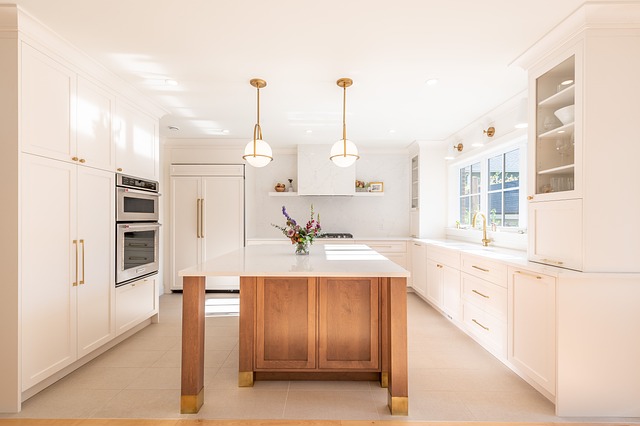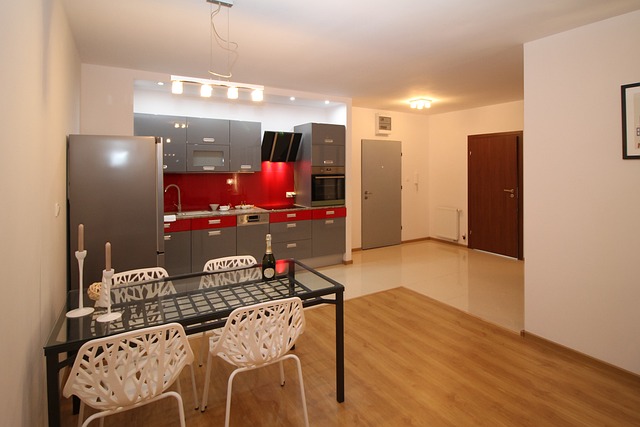When it comes to renovating your kitchen, one of the most impactful and cost-effective changes you can make is painting your cabinets. Not only does it give your kitchen a fresh and updated look, but it also protects the cabinets from daily wear and tear. However, choosing the best paint for kitchen cabinets can be a daunting task, considering the wide range of options available in the market today. In this comprehensive guide, we will delve into the key factors to consider when selecting the ideal paint for your kitchen cabinets.
- Durability and Finish:
The durability of the paint is crucial, as kitchen cabinets are subjected to constant use, moisture, and exposure to heat. Look for paints specifically designed for high-traffic areas, such as enamel or acrylic latex paints. These paints offer exceptional durability and are resistant to chipping, stains, and water damage. Satin or semi-gloss finishes are recommended for kitchen cabinets, as they provide a smooth, easy-to-clean surface that can withstand frequent wiping and scrubbing. - Adhesion and Primer:
Proper adhesion is essential for long-lasting cabinet paint. Ensure that the paint you choose adheres well to various surfaces, including wood, laminate, or previously painted cabinets. Some paints come with built-in primers, while others require a separate primer coat. Using a high-quality primer improves adhesion, prevents peeling or cracking, and enhances the final finish. Opt for a bonding primer that is specifically formulated for cabinets to achieve the best results. - Color Selection:
The color of your kitchen cabinets can significantly impact the overall aesthetic of your kitchen. It’s important to select a color that complements the existing décor and creates a harmonious atmosphere. Neutral colors like white, cream, or gray are timeless choices that can brighten up the space and provide a clean, classic look. Alternatively, bold and vibrant colors can add a touch of personality and create a focal point in the kitchen. Consider the overall style and theme of your kitchen when deciding on the perfect color. - Application Techniques:
To achieve a professional-looking finish, it’s essential to apply the paint correctly. Clean the cabinets thoroughly to remove any grease, grime, or residue. Remove the cabinet doors and hardware, and sand the surface lightly to create a smooth base. Apply the paint using a brush, roller, or sprayer, depending on your preference and the type of paint chosen. Multiple thin coats are preferred over a single thick coat to prevent drips, sags, and uneven coverage. Allow sufficient drying time between each coat as per the manufacturer’s instructions. - Environmental Considerations:
In recent years, there has been a growing concern for the environmental impact of paint products. Look for paints labeled as low-VOC (Volatile Organic Compounds) or zero-VOC, as they contain fewer harmful chemicals that can negatively affect indoor air quality. These eco-friendly paints not only benefit the environment but also ensure the health and well-being of your family during and after the painting process.
What type of paint is best for kitchen cabinets?
When it comes to giving your kitchen cabinets a fresh and vibrant look, choosing the right type of paint is crucial. Kitchen cabinets endure daily wear and tear, including exposure to heat, moisture, grease, and constant handling. Therefore, it’s essential to select a paint that not only provides excellent aesthetics but also offers durability and resilience. In the world of paints, there are several types available, each with its own set of properties and advantages. However, for kitchen cabinets, certain types of paint stand out as the best choices due to their exceptional characteristics.
- Acrylic Paint: Acrylic paint is a popular option for kitchen cabinets due to its durability, versatility, and easy application. It consists of acrylic resins, pigments, and additives that result in a robust and long-lasting finish. Acrylic paint dries quickly, has low odor, and offers excellent resistance to stains, moisture, and fading. Additionally, it provides a smooth and glossy appearance, enhancing the overall aesthetic appeal of your cabinets.
- Oil-Based Paint: Oil-based paint has been a traditional choice for kitchen cabinets for many years. It contains a combination of pigments and oil, typically linseed or alkyd oil. Oil-based paint delivers a durable and hard-wearing finish that can withstand heavy use and frequent cleaning. It offers exceptional adhesion and provides a lustrous, smooth surface. However, it is important to note that oil-based paint has a longer drying time and emits strong fumes during application, requiring proper ventilation.
- Water-Based Paint: Water-based paint, also known as latex paint, has gained popularity in recent years as a viable option for kitchen cabinets. This type of paint utilizes water as its primary solvent, making it eco-friendly and low in VOC (volatile organic compounds). Water-based paint is available in various finishes, including satin, semi-gloss, and high-gloss, allowing you to achieve the desired look for your cabinets. It provides good durability, quick drying times, and easy cleanup with soap and water.
- Chalk Paint: Chalk paint has emerged as a trendy choice for kitchen cabinets, particularly for those seeking a vintage or rustic appearance. This type of paint has a unique matte finish with a soft, chalky texture. Chalk paint adheres well to different surfaces, including wood, laminate, and metal, making it suitable for cabinet refurbishment. While it offers a distinct aesthetic appeal, it may require a protective topcoat to enhance durability and resistance to moisture.
- Cabinet-Specific Paint: In addition to the general types mentioned above, there are also paint products specifically designed for kitchen cabinets. These paints often contain additional additives and resins that provide enhanced durability, scratch resistance, and moisture protection. Cabinet-specific paints are formulated to withstand the demands of kitchen environments and offer a wide range of colors and finishes to suit individual preferences.

How to choose the right paint finish for kitchen cabinets?
Choosing the right paint finish for kitchen cabinets is a crucial decision that can significantly impact the overall aesthetics and durability of your kitchen. With numerous options available in the market, it’s essential to understand the different types of paint finishes and their suitability for kitchen cabinets. In this comprehensive guide, we will explore the various paint finishes and provide insights into selecting the best one for your kitchen cabinets.
- Matte Finish:
A matte finish is characterized by its low sheen and minimal reflectivity. This type of finish is a popular choice for kitchen cabinets due to its contemporary and elegant appearance. It provides a smooth, non-reflective surface that can effectively conceal imperfections and minor scratches. Matte finishes are also less prone to showing fingerprints and smudges, making them ideal for busy kitchens. However, it’s important to note that matte finishes may require additional maintenance as they can be less resistant to stains and difficult to clean compared to other finishes. - Satin Finish:
Satin finishes strike a balance between a matte and glossy finish. They offer a subtle sheen that enhances the beauty of kitchen cabinets while still maintaining a smooth appearance. Satin finishes are known for their durability, as they are more resistant to stains, moisture, and mildew growth. This makes them a suitable choice for kitchen cabinets, which are frequently exposed to moisture, steam, and cooking residues. Additionally, satin finishes are relatively easy to clean, making them a practical option for high-traffic kitchens. - Semi-Gloss Finish:
Semi-gloss finishes are renowned for their durability and resistance to moisture, stains, and mildew. They have a noticeable sheen that adds depth and richness to kitchen cabinets. The reflective nature of semi-gloss finishes makes them an excellent choice for smaller kitchens or spaces with limited natural light, as they can help brighten up the area. Moreover, semi-gloss finishes are highly washable and can withstand frequent cleaning, which is advantageous in a kitchen environment where spills and splatters are common. - Glossy Finish:
Glossy finishes offer the highest level of sheen and reflectivity among the different paint finishes. They provide a mirror-like appearance that can create a striking visual impact in the kitchen. However, it’s worth considering that glossy finishes tend to highlight imperfections, such as scratches and dents, more prominently than other finishes. They are also prone to showing fingerprints and smudges, requiring regular cleaning and maintenance. Glossy finishes are less commonly used for kitchen cabinets, as their high sheen can be overwhelming in larger spaces.

Common mistakes to avoid when painting kitchen cabinets
When it comes to transforming your kitchen cabinets with a fresh coat of paint, there are several common mistakes that many people make. Understanding these pitfalls and learning how to avoid them will ensure a successful and professional-looking cabinet painting project. In this guide, we will delve into the most frequent errors encountered during kitchen cabinet painting endeavors, providing you with valuable insights to achieve remarkable results. So, let’s explore these mistakes and learn how to sidestep them like a seasoned professional.
- Insufficient Surface Preparation:
One of the most critical steps in painting kitchen cabinets is proper surface preparation. Failing to adequately prepare the cabinets before applying paint can lead to peeling, chipping, and an overall unsatisfactory finish. Make sure to thoroughly clean the cabinets using a mild detergent to remove any grease, grime, or residue. Next, sand the surface gently to create a smooth and receptive base for the paint. Remember to remove all dust and debris before proceeding with the painting process. - Skipping Primer:
Priming kitchen cabinets is essential for achieving a durable and long-lasting finish. Unfortunately, many DIY enthusiasts skip this crucial step, leading to paint that doesn’t adhere properly or lacks durability. Primer not only helps the paint adhere better but also provides an even base for the color to appear more vibrant. Invest in a high-quality primer specifically designed for kitchen cabinets and apply it evenly before moving on to the paint application. - Neglecting Proper Ventilation:
Painting kitchen cabinets involves working with various chemicals and fumes, which can be harmful if inhaled in excessive amounts. Neglecting proper ventilation is a common mistake that can result in health hazards and compromised air quality. Ensure that your workspace is well-ventilated by opening windows, using fans, or wearing a respirator mask. Adequate ventilation will help dissipate fumes and ensure a safer environment for you and your family. - Rushing the Drying Process:
Patience is key when it comes to painting kitchen cabinets. Rushing the drying process by applying multiple thick coats of paint or not allowing sufficient drying time between coats can lead to tacky surfaces, paint smudges, and even permanent damage. Follow the instructions provided by the paint manufacturer regarding drying times, and allow each coat to dry completely before applying the next one. It may take a bit longer, but the end result will be well worth the wait. - Poor Brush and Roller Selection:
Choosing the right tools for the job can significantly impact the final outcome of your cabinet painting project. Using low-quality brushes or rollers can result in streaks, brush marks, and an uneven application of paint. Invest in high-quality brushes with synthetic bristles designed for smooth finishes. Additionally, opt for foam or microfiber rollers to achieve a seamless and professional look. Remember to clean your brushes and rollers properly after each use to maintain their quality and prolong their lifespan. - Inadequate Protection of Surrounding Areas:
Painting kitchen cabinets can be a messy endeavor if proper precautions are not taken to protect surrounding areas. Failing to cover countertops, floors, and appliances can result in accidental paint splatters and spills, causing unnecessary damage. Use drop cloths or plastic sheets to cover all surfaces that are not being painted. Additionally, consider removing cabinet doors and hardware to prevent any accidental drips or smudges. Taking these precautionary measures will save you time and frustration in the long run.
Excellent arguments presented. I will certainly take them into account in my further development.